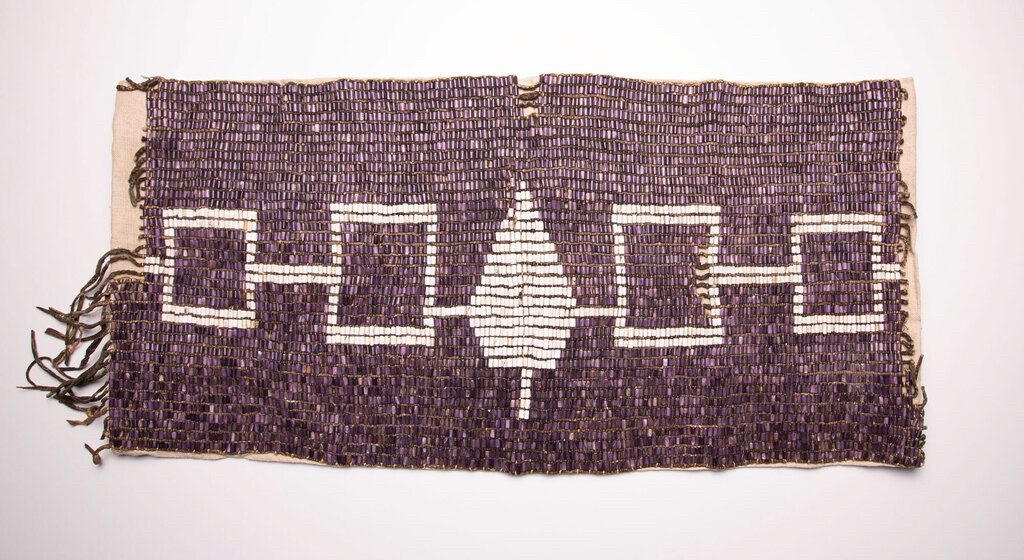The Susquehanna and Chenango Rivers join in Downtown Binghamton which, in the 1700s, was the sacred home of the Onondaga tribe.
Before English settlers arrived in North America, the Iroquois — also known as the Haudenosaunee — Confederacy made up the population of what is now called New York state. The Iroquois are made of up several nations: Mohawk, Oneida, Onondaga, Cayuga, Seneca and Tuscarora, which joined after the original merging of the five former leagues.
Prior to their merge, the people of those leagues had fought against each other until the Great Peacemaker, a Huron man, was able to visit and speak to the five tribes about his plan, as defined by the Creator, god of all the tribes for peace. Eventually, Great Peacemaker was able to join all tribes together by gathering the resenting emotions together and letting them be washed away by a stream.
The Hiawatha Belt, a belt symbolizing when all the tribes threw away their weapons to live in peace with the others, was then formed to connect all five nations with a symbol for each. At the center is the Tree of Peace, a white pine to be nurtured, as the nation would be. The white pine was planted at Onondaga Lake.
Despite their tame of war within, bloodshed still arrived in the Iroquois’ land from outsiders. Randall McGuire, distinguished professor of anthropology, currently teaches a course about Native American history and elaborated on the history of the Iroquois’ displacement.
“During the colonial period, there was a massive displacement of people all along the East Coast,” McGuire said. “At a place called Otsiningo Park, which is just on the northern edge of Binghamton, there was a settlement there in the 1700s and that was a settlement of refugees of groups further south that the Iroquois had taken in and given homes to.”
Otsiningo was referred to as the “The Southern Door” by the Iroquois, referencing their standard longhouse. The term signals the importance of the settlement to the nation.
The settlement had refugees from several tribes like the Nanticoke and the Conoys from Maryland, along with the Shawnees from Pennsylvania who were displaced from their homes by settlers. Joining them were residents of the Onondaga and Oneida Nations. That settlement, however, would be burnt down at the order of George Washington during the Revolutionary War.
“George Washington sent a call of troops against the Iroquois that basically scorched earth, destroyed the village in Otsiningo here and destroyed fields, orchards, everything,” McGuire said.
Binghamton University has conducted several archeological excavations at Otsiningo in the 1970s and in 2013, which found cooking hearths, pits and artifacts which showcase the significant use of the site. Chenango Point, Chenango Point South, the Roberson Museum and Science Center and John Moore Farm are sites at the confluence of the Chenango and Susquehanna Rivers that have been excavated to uncover thousands of years of Native American history traced.
The persecution by Washington’s army led the Indians to flee to Canada where some stayed, but others returned after the Revolutionary War. Upon their return, their land became heavily sought after. Although the U.S. Constitution states that only the federal government can make treaties with an Indian nation, that is not what occurred.
“What happened in upstate New York — like where we are here now — was taken from the Iroquois, more or less, as spoils of war, and was given to a guy by the name of [William] Bingham, Binghamton, who then sold it off to settlers,” McGuire said.
William Bingham was a delegate for Pennsylvania to the Continental Congress, the government for the original 13 colonies, and also served in the U.S. Senate. The wealthy banker sought to create a city with the Susquehanna and Chenango Rivers meeting at the center. Joshua Whitney, land agent of what would be known as Binghamton, sought settlers to buy into the property. What spurred the creation of Binghamton, New York happened in other locations around the state, mostly with the use of private companies, according to McGuire.
The Onondaga, who were displaced from the Southern Tier, had approximately 95 percent of their land illegally taken between 1788 and 1822 through a series of acquisitions. There is a present-day reservation for the Onondaga Nation just south from the city of Syracuse in Onondaga County, a sliver of what the nation once possessed.
In the City of Oneida v. Oneida Indian Nation (1985), a legal battle which was brought all the way up to the Supreme Court, the Supreme Court ruled that the Oneida tribe’s land was taken under unlawful possession by the state of New York. Despite the ruling, there have not been any substantial resolutions made between New York state and any of the Iroquois tribes.
“Oneida and the state of New York have never entered into an agreement on how to resolve that,” McGuire said. “So, it’s still kind of up in the air, because no New York state governor is going to gain anything by resolving this because it’s going to cost the state hundreds of millions of dollars.”
To learn more about the Onondoga Nation, reach out to Skä•noñh, Great Law of Peace Center, a Haudenosaunee Heritage Center. More history of the Onondaga Nation can be found here.



